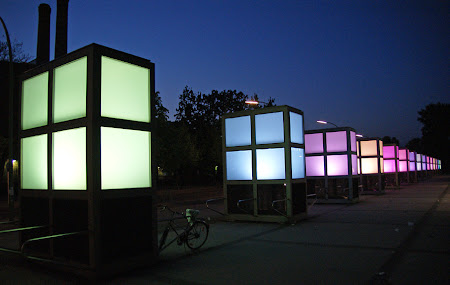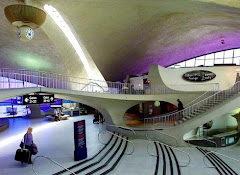Hello fellow Reviteers. I would like to announce the inception of Buro Smith Consulting. BSC specializes in BIM/CAD consultation and management in regards to the true BIM process as well as Integrate Project Delivery (IPD).
We not only focus on consulting but also the educational format as well. We strive to educate our users not only on how to operate the program but how to manage and integrate it into their current workflow. The Digital Architect Series has been created in order to maximize each client's investment as well as their create an efficient workflow that best suit that project's need. For more information, please visit us at www.burosmithconsulting.com.

Tuesday, July 7, 2009
Introducing Buro Smith Consulting
Monday, April 20, 2009
Green Templates Part II: Revit Architecture to Ecotect

With the onslaught of "Green" packages integrated into the BIM process and workflow, many users do not realize that the essential part of the data starts from the model itself. Of course you need a model to dictate your outcome in Ecotect or Green Building Studio, but the way we manage and set up our model needs to be refined prior to our exportation. By setting up our model at the very early stages of our design, we ensure that our readings in our sustaibable packages are accurate and reliable.
For this blog, we will focus on integration with Ecotect and Revit Architecture 2010. Listed below are the steps accompanied by images to aid in the process.
1. Select the MANAGE tab from the ribbon. Then select the PROJECT INFORMATION button. This will bring up the Instance Properties dialog box. In the dialog, select the EDIT button from the Energy Data data cell. This will take you to the Type Properties dialog box for Energy Data.
2. Enter in the necessary information for building type, postal code, ground plane, etc. You can omit this step prior to exportation and enter the data within Ecotect as well.
3. Next, select the HOME tab and then select the Room and Area pulldown>Area and Volume Computations.

4. Make sure that within the Area and Volume Computations dialog and under the Computations tab that the "Areas and Volumes" radio button is selected. Click OK. This sets the Revit model to compute both.
5. Place in your room and area tags and enter the information needed into each room tag. Information such as room name, ceiling finish, number, et cetera can be modified.
6. Place a section line across your model and go directly to that view.
7. If you want to place in a color scheme, place one in. In any case, working with both the plan and the section view open helps to visualize the next few steps. You will want to make sure that your roof is your bounding element and that your ceiling is not. If you have plenum space above or any space in your model that is not properly accounted for, Ecotect will produce inaccurate computations resulting in misleading information for LEED credits.
8. Make sure your room boundaries exceed the bounding component to ensure Revit computes the entire volume desired.
9. Select the Revit Icon at the top left and export the model to gbXML format. With 2010, you will open the ExportgbXML dialog box where we can also modify the project settings and its details and even isolate a desired room.
10. Click on Export.
11. Open up Ecotect Analysis 2010 and select from the FILE pulldown menu>Import?Model/Anaylsis Data.
12. Make sure that in the dialog box that appears you set your Files of Type to XML. Select your gbXML file.
13. The Import XML data dialog box opens up. Here you can specify how each room element comes into Ecotect. Click Open as New.
14. Run a series of tests in Ecotect to obtain your desired results.
Do keep in mind that these Green sustainable packages do not automatically certify your project for LEED accreditation but merely guide you in your process and workgflow to attain those credits.
I will focus more in detail with our sustainable packages as well as the utilization and implemtation of certain techniques in future posts. Stay tuned for more in this series.
Tuesday, February 17, 2009
Green Templates Part I: Indoor Analysis and Glazing
As Kermit once said, "it's not easy being green". How true this quote is, especially within the design industry. How do we become "green"? How can we begin to implement green practice into our Revit projects? Do we need to purchase Ecotect, IES, et cetera?
Although those packages will help a great deal in pointing you and your firm in the right direction, we can start to follow the green bricked road to the Emerald City (also Green!). Before we even export our model into an analyzation package, we can fashion our Revit template to provide a data path that will direct us even before getting to that green road.
The use of schedules and its manipulation will display and lay out the necessary information we need to adjust and modify the design. Lets take a quick look.
We have to set the model up correctly at first by using the Room and Area tools. Make sure your room computations are set to "areas and volumes". This is will give us an accurate calculation. 
Once that is set, we can then apply parameters to window systems as well as scheduling properties to calculate the information. The NORTH, SOUTH, EAST, and WEST parameters were added to be contained only to windows and curtain panels.
The formulas utilized in this schedule are:
Window Area Width * Height / 1 SF
Glazing Area of Room % of Window Area: From Room: Name
Overall Glazing Area Window Area / Glazing Area of Room
Glazing Percentage of Room Overall Glazing Area / Room Area
Room Area From Room: Volume / From Room: Unbounded Height / 1 SF
Glazing Multiplier if(North, 0.05, if(South, 0.15, if(West, 0.07, if(East, 0.07, 1))))
Overheat Integer if(Glazing Percentage of Room < Glazing Multiplier, 1, 2)
Overheat if(Overheat Integer = 1, "no", "yes")
Once that is set, the information can then be calculated to give you the desired outputs. Again, remember that Revit does not qualify your project for LEED accreditation but merely points you in the right direction.
Tuesday, February 3, 2009
The Digital Architect Series and 4D Planning

The Digital Architect Series was designed by Microdesk to facilitate and improve the design workflow as well as provide flexibility to your firm. If you utilize more than one program in your firm, chances are you are a prime candidate for the Digital Architect Series (DAS). DAS incorporates all aspects of the design workflow with existing, emerging, and future technologies to help alleviate overhead costs, downtime, and miscommunication.
With the advent of BIM technology and the Revit platform, more and more firms are adopting this new form of design and modeling. Taking information modeling to the next level is anyone's guess. We have seen other products, add-ons, and so on being mixed in with the BIM craze. Harnessing the BIM movement is up to you. Do you merely just want to implement BIM and totally abandon your old workflow? Of course not.
The Digital Architect Series realizes the need for every designer to evolve not just in technology but to be truly ahead of the rest, you need to evolve your workflow. DAS incorporates all Autodesk products other product family lines to create a smooth and efficient workflow that will help your company obtain higher revenue, lower overhead costs, and develop and modern approach to the workflow process. So much informaiton is lost in translation between programs that most times, you end up working on something that was already done.
Think about going from Google SketchUp to Revit to Ecotect to Navisworks to Primavera. The interoperability can sometimes cause headaches but realizing the your path and planning out an effective and efficient solution with DAS will help you get there. For more information on DAS, please visit www.microdesk.com.
I mention in the title of the idea of 4D. 4D design has and is a main component in project planning and workflow, but also can serve on various different levels in the BIM environment. A section of DAS focuses primarily on the aspect of 4D. Primavera is the leading program in 4D and Microdesk has implemented its use within the DAS. It is now possible to take a series course of Google SketchUp to Revit to Ecotect to Navisworks and finally to Primavera. A solid workflow that finalizes with 4D.
Primavera is the leading project and program management solution provider to the AEC Industry. No matter the size of a project, Primavera enables AEC organizations to effectively manage time, costs, resources, contracts and changes in a single solution. Primavera’s Integrated Project Management (IPM) provides each project participant with anytime, anywhere access to their project information. For more information on Primavera, visit www. primavera.com.
Microdesk is an authorized reseller of Primavera software!








